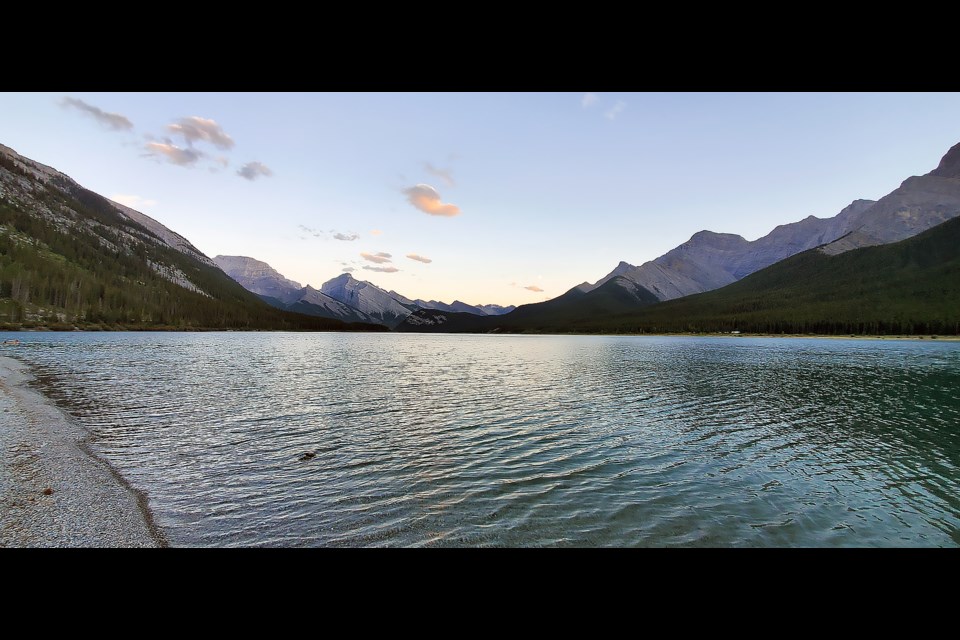KANANASKIS COUNTRY – The province will collect about $11 million from Kananaskis Conservation Pass revenues in the pass’s second year, but so far, where all that money will go is unclear.
Banff-Kananaskis MLA Miranda Rosin said the UCP government stands firm on keeping the pass ahead of the provincial election and she believes the province has been transparent with its revenue reinvestments, though she could not speak on plans for money collected in the current fiscal year.
“I’m not quite sure where investments will come yet from the end of this fiscal year,” she said. “But the reality is, more than double, if not close to triple or more the amount the pass generates, is spent in Kananaskis every single year.
“It has proven to be a very sustainable revenue model, but certainly there is still exponential funding beyond what the pass can generate, which continues to be funded by the general revenue fund and the general taxpayer, which I think really demonstrates the need and the reason why we brought this pass in.”
In 2022, there were 4.2 million visitors to K-Country, according to Alberta Parks – down from five million-plus during the COVID-19 pandemic in 2020 and 2021. From June 2021-22, in the pass’s first year, the province collected $12 million, 100 per cent of which it said would be used to improve conservation, public safety and infrastructure in K-Country.
According to Heather Kaszuba, a spokesperson for the Ministry of Forestry, Parks and Tourism, fees from this year have so far been reinvested “to increase public engagement in conservation efforts, support the responsible use of park and public lands, improve access to sites across the region and manage visitation.”
“This includes $1.2 million to maintain over 1,600 kilometres of trails, $500,000 in grants to support local trail organizations, and $1.5 million to support the Public Safety and Dispatch program,” she said in an email.
Last June, the province released a statement outlining investments made from the pass in 2021-22, reporting $3.5 million to support staffing, $1.75 million for operating facilities, $1.5 million for regional conservation officers, $1.5 million for K-Country’s Public Safety program, $1 million for Canmore Nordic Centre upgrades, $994,000 for a regional transit initiative with Roam, $550,000 for local volunteer organizations, $500,000 for visitor services and information centres, $350,000 for traffic management services, $250,000 for winter trial grooming and $100,000 for search and rescue operations.
The release noted an additional $4 million was being invested in upgrades to Grassi Lakes and Goat Creek day use areas, in addition to upgrades totalling $17.5 million for the Canmore Nordic Centre, as allocated by the 2022 provincial budget.
Based on the 2023 provincial budget, Rosin said she understands nearly, if not all of a $500,000 funding increase intended for Parks’ conservation, will also go toward K-Country.
“My understanding after being in conversation with the [Parks] minister’s chief of staff is that almost all of that funding is going to Kananaskis, but I can’t necessarily give you specifics as to what initiatives are under that umbrella currently,” she said, adding more details can be expected from the ministry after it goes through its estimate process in the coming weeks.
“Even with the conservation pass revenue model, though, we are seeing increased funding through general means of conservation initiatives and other investments in the park beyond what the pass generates. This just demonstrates the continued support of the park with adequate funding and infrastructure.”
The NDP – currently tied with the UCP ahead of the May election, according to a recent poll by Abacus Data – have repeatedly called for the province to scrap the pass and pledged to remove it if they come into power.
Instead of a pass system in K-Country, the NDP has proposed a voluntary donation model and personalized licence plates to display for provincial parks, which could be made available for purchase. It would model a similar program in British Columbia created in 2016. Last year, it collected about $10 million.
The B.C. program is $50 for purchasing a plate and $40 for renewal. The NDP has not named a price yet, however, some user groups have voiced interest in adopting a similar model.
“With the B.C. parks plate program, you pay for a plate and then every year you pay a little bit more on your insurance renewal to support the parks,” said Shaun Peter, president of Bragg Creek and Kananaskis Outdoor Recreation. “That money doesn’t get lost in general revenue … it goes into its own completely separate fund and every single dollar that’s spent towards that is allocated for improvements above and beyond the general costs of running the parks.”
Peter, like the NDP, said he feels everyone should have access to Kananaskis Country, regardless of wealth, especially with considerations for inflation.
Tourism Canmore Kananaskis (TCK) CEO Rachel Ludwig said the region’s destination management organization is neutral on the pass. Since it was implemented, there is no data to demonstrate that visitation has slowed, with 2020-2021 as exceptions during the pandemic when visitation rose to record highs.
“Visitors will always come to beautiful parks, regardless of destination promotion,” said Ludwig. “We’re still seeing strong visitation, and regardless of where it comes from, additional funding into Kananaskis is important and TCK is appreciative of all investments made to the region.”
Ludwig noted government investment in infrastructure will continue to be necessary for the area given how small and limited in its capacity the Kananaskis tax base is to support a trend of over four million visitors a year.
“We’re hoping the provincial government will keep investing regardless of the funding mechanism,” she said. “We need additional investments to improve the visitor experience while also moving the needle on sustainable tourism, protecting this place.”
The Local Journalism Initiative is funded by the Government of Canada. The position covers Îyârhe (Stoney) Nakoda First Nation and Kananaskis Country.




